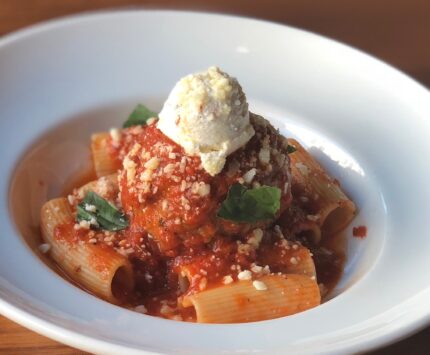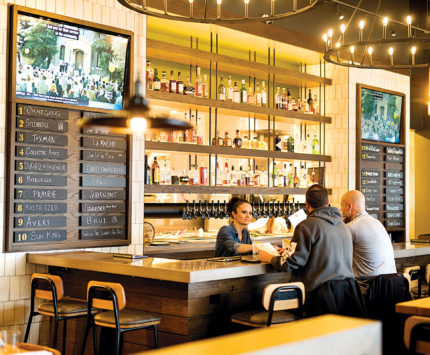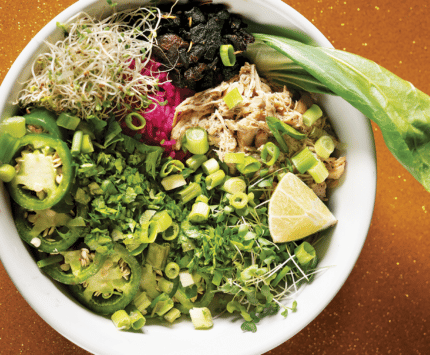Q&A With Chai Enthusiast Ruchi Shah

Ruchi Shah, tea sommelier-in-training and host of chai-focused events, including a Chai High Tea in-person setting at Mallow Run Winery on May 21.Photo by Tony Valainis
Her website showcases sexy pours of spiced milk tea into dainty china cups and elaborate desserts and finger sandwiches arranged on tiered trays. But Ruchi Shah’s tea-time brand is decidedly pinkies-down, covering masala chai’s complicated place in history, her own family’s rich tradition, and tips for brewing a delicious cup. “All you really need is a sauce pan, a strainer, water, milk, and sugar,” says Shah, who is also studying to be a tea sommelier. A full-time speech pathologist with St. Vincent Health, she and her mother, Manjari Shah, host in-home tea brewing experiences for groups of 6 to 10 and pop-ups like their upcoming Chai High Tea event at Mallow Run Winery on May 21—all modern expressions of a chai ritual that has been dear to Shah for her entire life.
Why is tea important to you?
My family is from India. My parents came here before I was born. Since masala chai was invented in India, there’s a lot of tea culture in my family. So I grew up around chai. My grandfather was a purchaser of tea when he lived in Kolkata and was pretty into chai—like had to have it every day, multiple times a day.
Did you inherit your grandfather’s love of chai?
Even when I wasn’t old enough to drink it, I remember the smells and the aroma, and just being a part of that. I grew up in a multi-generational household because my grandparents lived with us for six months every year throughout my childhood. We all had different activities during the day, whether it was at work or school or home. So this was a time to chat about our day, to reconnect and participate in a tradition that has been going on for a few generations in a lot of South Asia. As I got older, I looked forward to the late afternoon, when we would kind of sit around. It became really special to me.
What is chai, exactly?
Chai means tea. When people say “chai tea,” they’re saying “tea tea.” It’s like when people say “naan bread.” The two words can technically be used interchangeably. But masala chai means spiced tea. To make it even more interesting, chai masala means spices for tea.
What are the spices?
It depends on the region you’re from. Cardamom and ginger are the most common. My family likes a floral chai, so we like lemongrass and cinnamon. There are some regions where they like fennel or black pepper.
How were you able to package your enthusiasm for chai into a successful brand?
It started as a pop-up. My mom is a big part of this, and we had three or four that sold out before the pandemic started. We thought that was what we were going to do, but when COVID happened, we pivoted to selling some products. We started experimenting with an Etsy store where we source our chai from a family farm in India. We grind our own spices to make different chai masalas that we sell on there as well as brewing kits. The pop-ups are kind of an experience—a faux afternoon tea with some history class. We talk about the East India Company and the British, who through a lot of covert operations and not very legal activity, exploited tea in these regions. The food is a lot of traditional snacks and foods, and for the tea tasting, we serve three different pours, three different kinds of chai.
Are people amazed when they taste masala chai as it is meant to be sipped?
If you want to go to Starbucks and get a chai latte, those tastes great to a lot of people. If you’re wanting something closer to a more traditional experience, you want those bitter tea leaves, because that’s what is going to hold up to the milk and the spices.
You are also studying to be a tea sommelier. What does that involve?
There are a lot of online classes, and a lot of exams. Part of our exams include a blind cupping, where you’re presented with different cups of tea. You don’t get to see the leaves or the water temperature or how long it was brewed—all of which will give you really good hints at what it is. And you have to say like, “Okay, this is this from this country. And this was a high-elevation or low-elevation tea.” It’s really hard.
How do you teach your brain those skills?
You drink lots of tea. You take lots of notes. Eventually, it’s supposed to click.
There is an often-mocked scene in the documentary SOMM, about wine sommeliers, where someone likens the bouquet of a Riesling to a freshly opened can of tennis balls. Do tea sommeliers get that deep in the weeds?
I love that movie, because it reminds me to never give up—you can always study harder and work harder and take the exam again. And yes, I have a tasting spoon that I’m slurping out of at a high velocity, which is supposed to mix in air and shoot it to the back of my mouth.
What flavor notes can you detect in a slurp of tea?
Grassiness. Vegetative. Floral. Astringency. There could be caramelly notes. The flavor can also be very influenced by the tea you tasted before that tea and the one you tasted after that tea. Sometimes I study with my friends. We’ll mail each other tea, Facetime, and write down answer keys. And we will get different things out of the tea, different notes. And that is part of what makes it challenging.





